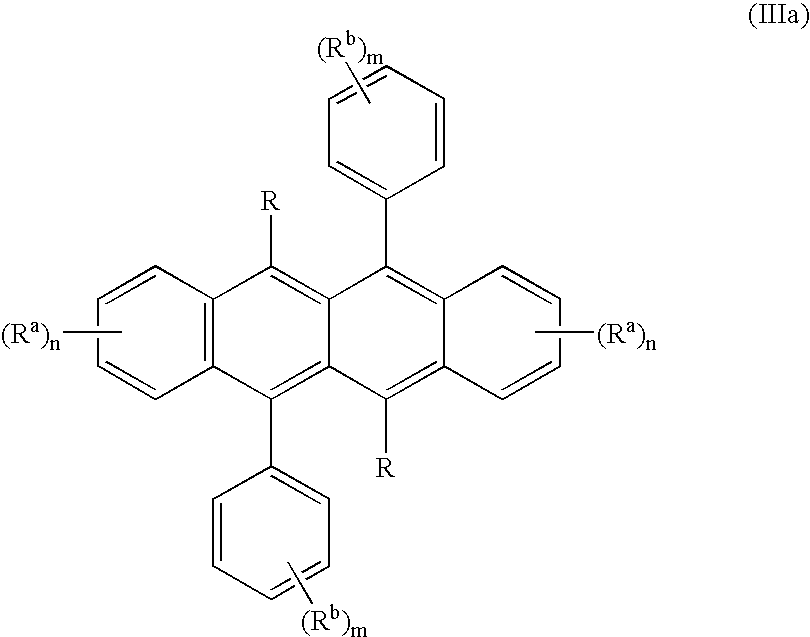Synthesis process
a synthesis process and naphthacene technology, applied in the field of naphthacene compounds, can solve the problems of inability to reproduce, low yield of rubrene prepared in this manner, impurities, etc., and achieve the effects of simple and rapid preparation, high purity, and good yield
- Summary
- Abstract
- Description
- Claims
- Application Information
AI Technical Summary
Benefits of technology
Problems solved by technology
Method used
Image
Examples
examples
Sample 1 (Invention)
[0040] The invention is exemplified in scheme 1 to prepare compound, YD-1:
Propargyl alcohol, PA-1: 1,1,3-Triphenylpropargyl alcohol can be purchased from the Aldrich Chemical Company, Milwaukee, Wis., USA.
[0041] Preparation of Naphthacene Compound, YD-1: Propargyl alcohol PA-1, (10.0 g, 35 mMole) was dissolved in toluene (70 mL), with slight heating to get complete dissolution, cooled and stirred at 0° C. under a nitrogen atmosphere. To this solution was added triethylamine (NEt3), (4.95 g, 6.3 mL, 49 mMole) and then treated drop-by-drop with methanesulfonyl chloride (CH3SO2Cl), (6.29 g, 4.24 mL 49 mMole), keeping the temperature of the reaction below 10° C. After the addition, the solution was stirred at 0° C. for 15 minutes, at room temperature for 15 minutes and then heated to 110° C. for 4 hours. After this period, the reaction was cooled, diluted with ethyl acetate (100 mL) and washed with 2N—HCl. The organic layer was collected, dried (MgSO4), filtere...
PUM
| Property | Measurement | Unit |
|---|---|---|
| temperature | aaaaa | aaaaa |
| temperature | aaaaa | aaaaa |
| temperature | aaaaa | aaaaa |
Abstract
Description
Claims
Application Information
 Login to View More
Login to View More - R&D
- Intellectual Property
- Life Sciences
- Materials
- Tech Scout
- Unparalleled Data Quality
- Higher Quality Content
- 60% Fewer Hallucinations
Browse by: Latest US Patents, China's latest patents, Technical Efficacy Thesaurus, Application Domain, Technology Topic, Popular Technical Reports.
© 2025 PatSnap. All rights reserved.Legal|Privacy policy|Modern Slavery Act Transparency Statement|Sitemap|About US| Contact US: help@patsnap.com



